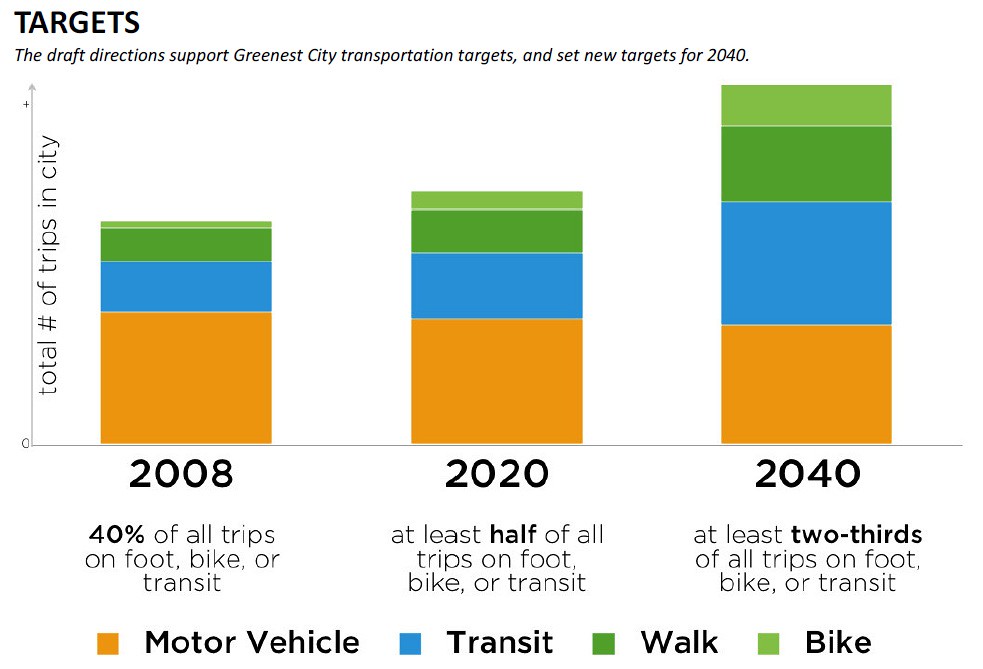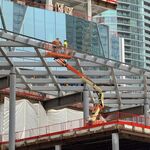M II A II R II K
Senior Member
Vancouver's 30-year transportation plan: heavy on walking, light on cars
June 18, 2012
By Mike Aynsley

Read More: http://www.openfile.ca/vancouver/bl...-transportation-plan-heavy-walking-light-cars
The City of Vancouver has just released the updated version of its transportation plan looking into the year 2040. As you would expect from a city that says active transportation is its top transportation priority, walking, cycling, and public transit figure into the plan quite prominently.
- Other priorities outlined in the document include: improve pedestrian safety, promote walking, make streets and public areas “rain-friendly†(this would entail things like installing more awnings in commercial areas), create more public spaces, promote cycling, reduce bike theft, and promote and improve transit. The plan makes no mention of building new roads or installing more parking for cars. In fact, the section on cars states states the goal is to manage the road network efficiently to improve safety and support a gradual reduction in car dependence. Make it easier to drive less. Accelerate the shift to low carbon vehicles.
- The plan does state, however, that the city will work to improve traffic signal timing and rush hour management. As far as parking is concerned, the idea is to reduce the need for it while making it easier to find available spaces. The proposal states a lot of traffic is the result of drivers cruising around in search of an available parking space—which accounts for up to 40 per cent of traffic in some cities. The city can reduce congestion, support local businesses, and increase customer convenience by providing drivers with better information on available spaces, and by setting on-street prices to ensure a limited number of on-street spaces are always available. New and emerging technologies will continue to make this easier.
.....

June 18, 2012
By Mike Aynsley

Read More: http://www.openfile.ca/vancouver/bl...-transportation-plan-heavy-walking-light-cars
The City of Vancouver has just released the updated version of its transportation plan looking into the year 2040. As you would expect from a city that says active transportation is its top transportation priority, walking, cycling, and public transit figure into the plan quite prominently.
- Other priorities outlined in the document include: improve pedestrian safety, promote walking, make streets and public areas “rain-friendly†(this would entail things like installing more awnings in commercial areas), create more public spaces, promote cycling, reduce bike theft, and promote and improve transit. The plan makes no mention of building new roads or installing more parking for cars. In fact, the section on cars states states the goal is to manage the road network efficiently to improve safety and support a gradual reduction in car dependence. Make it easier to drive less. Accelerate the shift to low carbon vehicles.
- The plan does state, however, that the city will work to improve traffic signal timing and rush hour management. As far as parking is concerned, the idea is to reduce the need for it while making it easier to find available spaces. The proposal states a lot of traffic is the result of drivers cruising around in search of an available parking space—which accounts for up to 40 per cent of traffic in some cities. The city can reduce congestion, support local businesses, and increase customer convenience by providing drivers with better information on available spaces, and by setting on-street prices to ensure a limited number of on-street spaces are always available. New and emerging technologies will continue to make this easier.
.....





